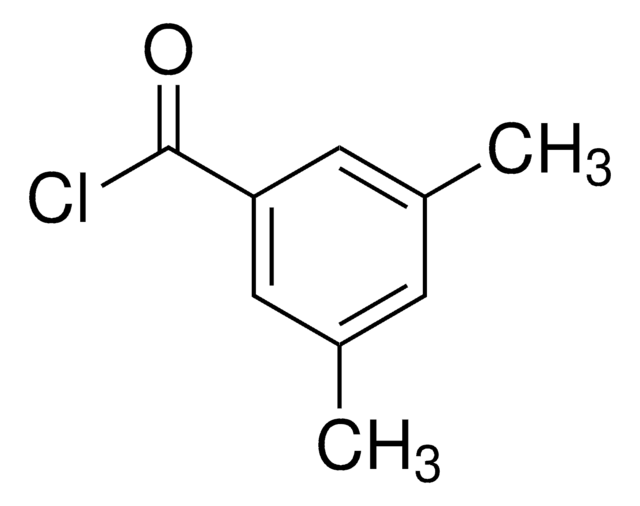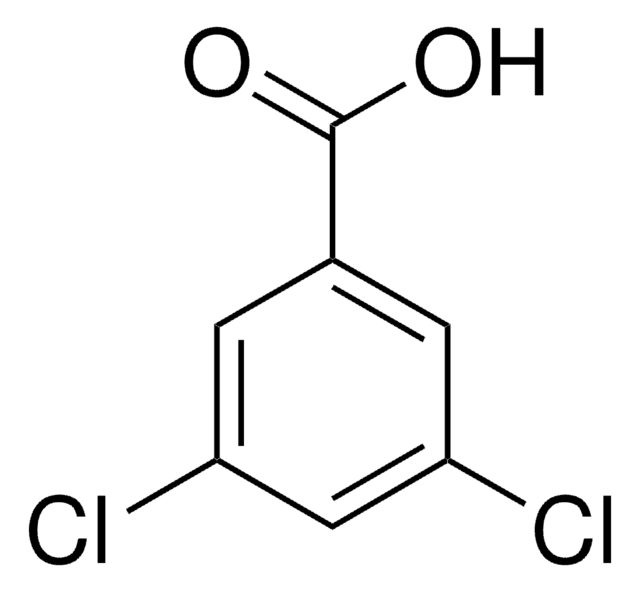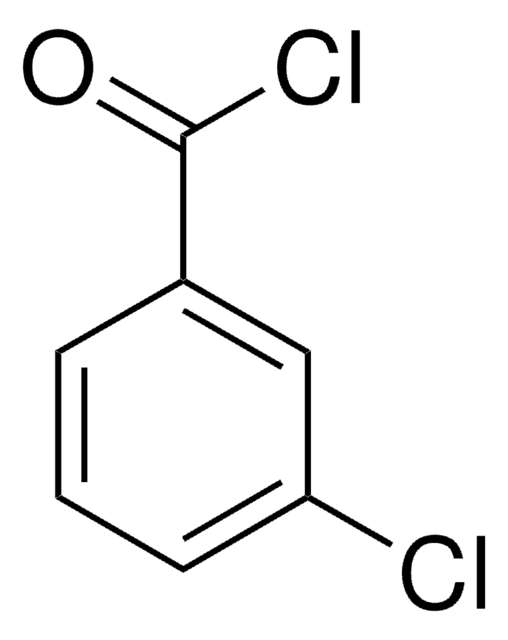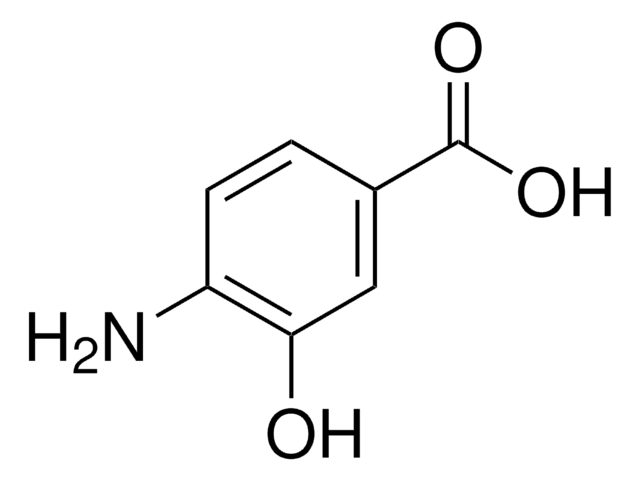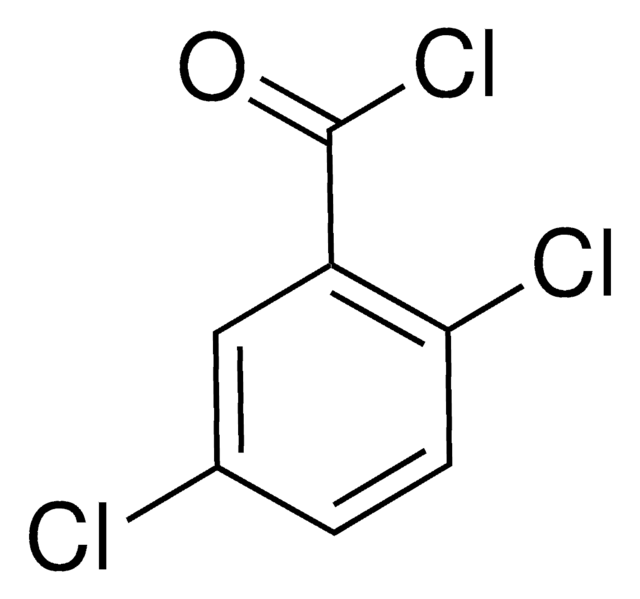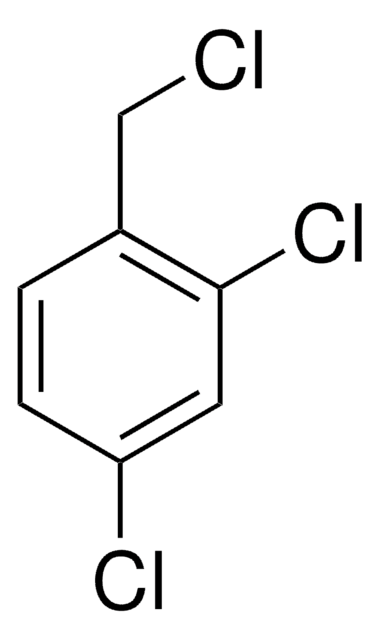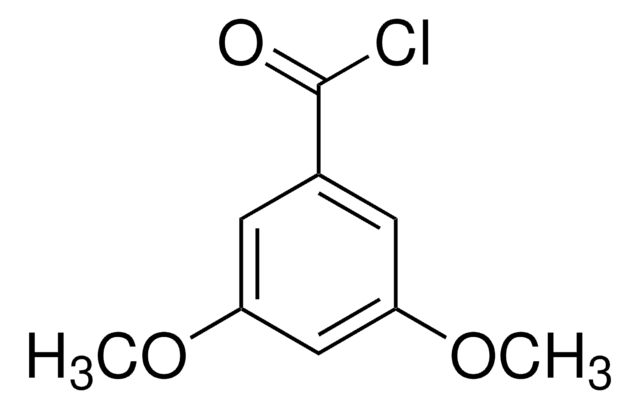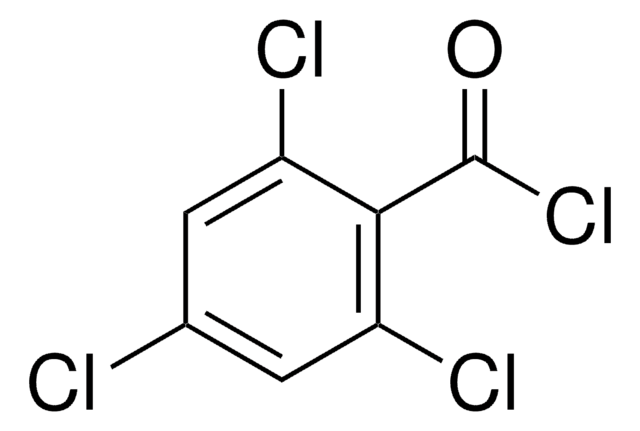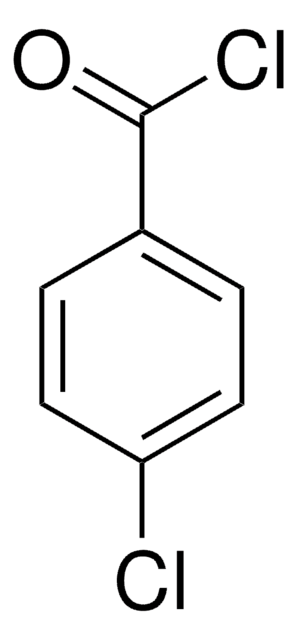All Photos(2)
About This Item
Linear Formula:
Cl2C6H3COCl
CAS Number:
Molecular Weight:
209.46
EC Number:
MDL number:
UNSPSC Code:
12352100
PubChem Substance ID:
NACRES:
NA.22
Recommended Products
vapor pressure
0.1 mmHg ( 32 °C)
Assay
96%
form
solid
refractive index
n20/D 1.582 (lit.)
bp
135-137 °C/25 mmHg (lit.)
mp
28 °C (lit.)
SMILES string
ClC(=O)c1cc(Cl)cc(Cl)c1
InChI
1S/C7H3Cl3O/c8-5-1-4(7(10)11)2-6(9)3-5/h1-3H
InChI key
GGHLXLVPNZMBQR-UHFFFAOYSA-N
Application
3,5-Dichlorobenzoyl chloride has been used in the preparation of:
- N-(1,1-dimethylpropynyl)-3,5-dichlorobenzamide, herbicide
- (3,5-dichlorophenyl)(2-(4-methoxyphenyl)-5-methylbenzofuran-3-yl)methanone
Signal Word
Danger
Hazard Statements
Precautionary Statements
Hazard Classifications
Acute Tox. 4 Oral - Eye Dam. 1 - Skin Corr. 1C
Storage Class Code
8A - Combustible corrosive hazardous materials
WGK
WGK 3
Flash Point(F)
235.4 °F - closed cup
Flash Point(C)
113 °C - closed cup
Personal Protective Equipment
dust mask type N95 (US), Eyeshields, Gloves
Choose from one of the most recent versions:
Already Own This Product?
Find documentation for the products that you have recently purchased in the Document Library.
Customers Also Viewed
Transformations of the herbicide N-(1, 1-dimethylpropynyl)-3, 5-dichlorobenzamide in soil.
Yih RY, et al.
Weed Sci., 604-607 (1970)
Dongsheng Xu et al.
Journal of chromatography. A, 1593, 63-72 (2019-02-05)
An O-[2-(methacryloyloxy)-ethylcarbamoyl]-10,11-dihydroquinidine (MQD)-silica hybrid monolithic column was prepared by a facile "one-step" strategy within a 100 μm I.D. capillary. The influence of the methanol, ethylene glycol and water volume ratio, reaction temperature and time, cetyltrimethylammonium bromide and MQD monomers content
Xizhen Jiang et al.
European journal of medicinal chemistry, 46(8), 3526-3530 (2011-05-17)
Thirteen compounds, based on benzofuran skeleton bearing aryl substituents at its C-3 position through methanone linker, were synthesized and screened for their antibacterial and antifungal activities against four bacteria Escherichia coli, Staphylococcus aureus, Methicillin-resistant S.aureus, Bacillus subtilis, and a fungus
Adam F Nugraha et al.
Polymers, 12(7) (2020-07-24)
Several methods to synthesize poly(phenylene) block copolymers through the nickel coupling reaction were attempted to reduce the use of expensive nickel catalysts in polymerization. The model reaction for poly(phenylene) having different types of dichlorobenzene derivative monomers illustrated the potential use
Our team of scientists has experience in all areas of research including Life Science, Material Science, Chemical Synthesis, Chromatography, Analytical and many others.
Contact Technical Service